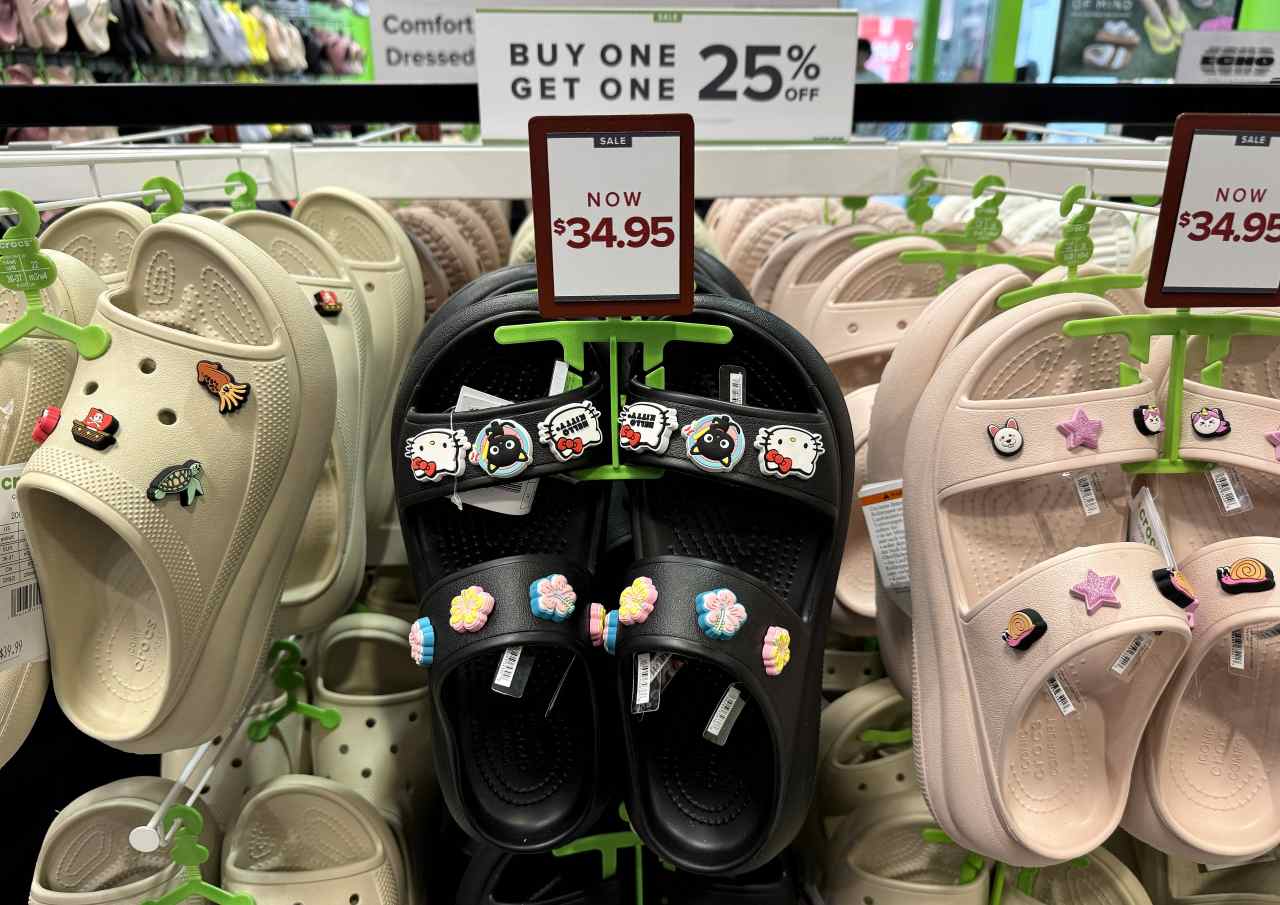
Crocs sales have dropped 5%, marking the first decline in five years and raising concerns about future demand. This significant downturn signals a potential peak in the footwear company’s popularity after a sustained growth period, necessitating a closer look at investor sentiment and future sales forecasts.
This slump is crucial for investors as it indicates a possible market saturation point or changing consumer preferences in the casual footwear market, impacting the stock’s future trajectory.
As of market close on October 25, 2025, Crocs reported sales of its namesake footwear dropped from ₹100.00 Cr to ₹95.00 Cr, a 5% dip in overall quarterly revenue.
Our analysis delves into the implications of this sales drop and its broader market impact.
| Metric | Previous | Current | Change |
|---|---|---|---|
| Sales of Namesake Footwear | ₹100.00 Cr | ₹95.00 Cr | -5.00% |
| Overall Quarterly Revenue | ₹150.00 Cr | ₹142.50 Cr | -5.00% |
Expert Market Analysis
Crocs’ recent financial disclosures mark a significant inflection point, with sales of its flagship footwear declining for the first time in five years. This shift away from a consistent growth trajectory, especially after a prolonged boom period, necessitates a critical re-evaluation of the company’s strategic direction. Historical market patterns often indicate that such downturns require proactive measures to navigate evolving consumer preferences and competitive pressures. Analysts will be keenly observing how Crocs adapts to these new market dynamics, particularly in the context of broader shifts in consumer spending and the fast-paced fashion industry. The company’s ability to innovate and respond to changing consumer tastes will be paramount in reversing this trend and maintaining its market position, especially as similar companies in the footwear sector have faced challenges with rapid trend shifts. This downturn follows a period of robust expansion, making the 5% sales drop a notable deviation for investors tracking the company’s revenue growth.
A deeper examination of Crocs’ core business fundamentals reveals the immediate impact of softening demand. While specific profit margins and EBITDA figures for the latest quarter are yet to be fully detailed, the reported sales drop in their primary product line is a strong indicator. Investors and analysts will scrutinize the company’s inventory management and marketing strategies for signs of adaptation. Potential contributing factors to this trend include rising input costs, supply chain volatility, or a discernible shift in consumer tastes towards alternative casual footwear brands, a concern echoed by many apparel companies. Assessing Crocs’ free cash flow generation and its ability to sustain valuation multiples amidst these challenges will be paramount for a comprehensive understanding of its financial health, particularly concerning its digital transformation initiatives.
Comparing Crocs’ performance against its industry peers provides essential context for understanding sector-wide trends. Competitors like Skechers and Deckers Outdoor Corporation (owner of UGG and Hoka) may be experiencing different market conditions. If rivals are demonstrating sustained or increased sales, it suggests that Crocs’ downturn may be idiosyncratic, possibly stemming from product appeal or marketing effectiveness rather than a universal industry slowdown. Shifts in market share and the successful introduction of innovative products by competitors can exert considerable pressure on established brands. Furthermore, any regulatory changes affecting manufacturing or international trade could also reshape the competitive landscape, impacting Crocs’ market share and overall revenue growth projections for the casual footwear segment.
The expert takeaway for investors is one of cautious optimism, underscored by the need for diligent monitoring. While the recent sales drop is a cause for concern, Crocs has a history of brand resilience and strategic adaptation. However, the anticipation of continued sales challenges necessitates a comprehensive review of the company’s long-term growth strategy and product diversification efforts. Retail investors might consider adjusting their exposure until clearer recovery signals emerge, while institutional investors may focus on the company’s debt profile and potential for innovation, especially as market sentiment remains cautious on consumer discretionary spending in the current economic climate. The outlook for 2025 necessitates a close watch on management’s guidance.
Related Topics:
CROX, Crocs Inc., Footwear Stocks, Q3 Earnings 2025, Sales Decline, Consumer Demand Trends, Footwear Industry Analysis, Crocs Stock Analysis, Casual Footwear Market, US Stock Market News



